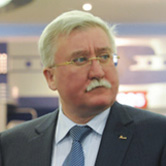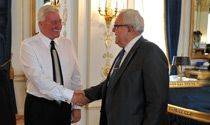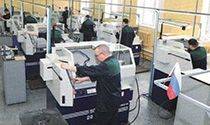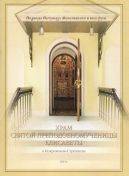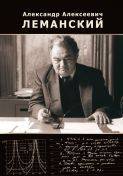Sergei’s Courtyard, part of a 19th century complex built with stone imported from Russia, has been renovated for Russian Orthodox pilgrims; 22-room hotel opens next month

It’s been decades since Russian pilgrims slept in Jerusalem’s Russian Compound. That hiatus is about to end.
Sergei’s Courtyard, a former luxury hostel and outbuildings built in the late 19th century by Russia’s Imperial Orthodox Palestine Society to serve Russian pilgrims traveling to the holy land, will be ceremoniously unveiled on July 18, following several years of significant renovation and restoration.
The newly refurbished space is a nine-acre complex of verdant gardens with two Renaissance-styled towers (that now house public bathrooms) and surrounded by a square of two-story stone buildings. That now includes a 22-room hotel, which will open next month — to all, not just Russian pilgrims. Also planned is a library and museum detailing the entire compound’s rich history.
“It’s a five-star hostel,” said Boris Lemper, the Russia-born Israeli attorney who has been working with the Imperial Orthodox Palestine Society for several years on the project. “The Russian pilgrims will want to come here. They can walk in the footsteps of their ancestors.”
The courtyard and hostel were named for Grand Duke Sergei Alexandrovich, brother to Czar Alexander III and president of the Orthodox Palestine Society, considered a scholarly organization.
Grand Duke Sergei Alexandrovich of Russia, 1857-1905
With buildings made from hewn stone shipped from Russia, the structures in Sergei’s Courtyard were known at the time as the most marvelous buildings in the city.
They were constructed as part of the 17-acre Russian Compound, a complex next to Jerusalem’s City Hall that included a church, consulate, hospital and hostels.
The construction for the Russian Compound was a massive undertaking at the time, with building materials and furniture shipped from Russia. The buildings were constructed in Renaissance style, with massive wooden doors, paned windows and high ceilings. Most of the structures included inner courtyards with stables, chicken coops, water wells and laundries.
The heart of the Russian Compound was the Sergei Courtyard, an urban gem housing exclusive lodgings for rich pilgrims, royalty and dignitaries.
One of the two Renaissance-styled towers and fishponds in Sergei’s Courtyard, now housing the public bathrooms (Jessica Steinberg/Times of Israel)
With the outbreak of the Russian Revolution in 1917, the compound’s priests and staff were expelled and the Turkish soldiers of the Ottoman Empire occupied the compound.
Russian pilgrims stopped arriving in Israel and there was no money to maintain the area. It was later rented to the British authorities, who used it as a center of government administration, turning one of the hostels into a central prison.
The carefully restored muraled ceilings and walls of the former dining room in the Russian complex (Jessica Steinberg/Times of Israel)
The Israeli government purchased the compound land in the 1960s, and it eventually became known as a center of Jerusalem nightlife, with popular bars and restaurants named Sergei and Glasnost, and frequented by the city’s students and younger residents.
Sergei’s Courtyard was used for years as a rundown office site of the Agriculture Ministry; Moshe Dayan reportedly had his offices there during a brief stint as the agriculture minister. The Society for the Protection of Nature in Israel and Parks and Nature Authority had their Jerusalem offices in Sergei’s Courtyard until 2012 and held gatherings and environmental programs around the gardens and fishponds.
In 2008, then prime minister Ehud Olmert decided to offer Sergei’s Courtyard as “reconciliation gift” to Russia.The two countries had clashed over Moscow’s interest in selling weapons to Syria and Iran, and its lack of interest in increased international sanctions against Iran. The move, however, was sharply protested by some in the Israeli government, who didn’t like the idea of giving up parts of Jerusalem for geopolitical reasons.
“I am not expecting the Russians to change their policies on account of the Sergei Courtyard,” said Michael Eitan, a Likud member, to the Los Angeles Times, in an October 2008 article.
It was around that time that Lemper began representing the Orthodox Palestine Society in Israel.
“They wanted to figure out what were the rights of the Russian government in Israel,” said Lemper. “It was a huge mess, and they wanted to restore what they’d had.”
It’s unclear if the meticulously restored dining room will be used in the same capacity when the complex is reopened on July 18, 2017 (Jessica Steinberg/ Times of Israel)
The Legal Forum for the Land of Israel, a right-wing civil rights group that also struggled against Israel’s 2005 disengagement in Gaza, petitioned the High Court of Justice against the title transfer of Sergei’s Courtyard back to Russia. But the High Court ruled the government had the right to decide on the move.
It took another few years for the property transfer to go through, and for Russian President “Putin to get stronger,” said Lemper. “He started looking for other Russian properties around the world, and at the time, Russia and Israel were getting along well.”
The site has been carefully restored, down to the large, sashed windows of the two-story buildings surrounding the courtyard, and the dining room, a grand space replete with crystal chandeliers and muraled ceilings featuring Jesus and his disciples.
The 22-room hotel, which is slated to open in August, harkens to the style of the original hostel, with flocked wallpaper and heavy wooden furniture, the walls decorated with scenes of Russia.
“They wanted it be what it had been, going back to its roots,” said Lemper. “It looks like the old days, and that’s good, because it’s super important to the Kremlin.”
timesofisrael.com by Jessica Steinberg





